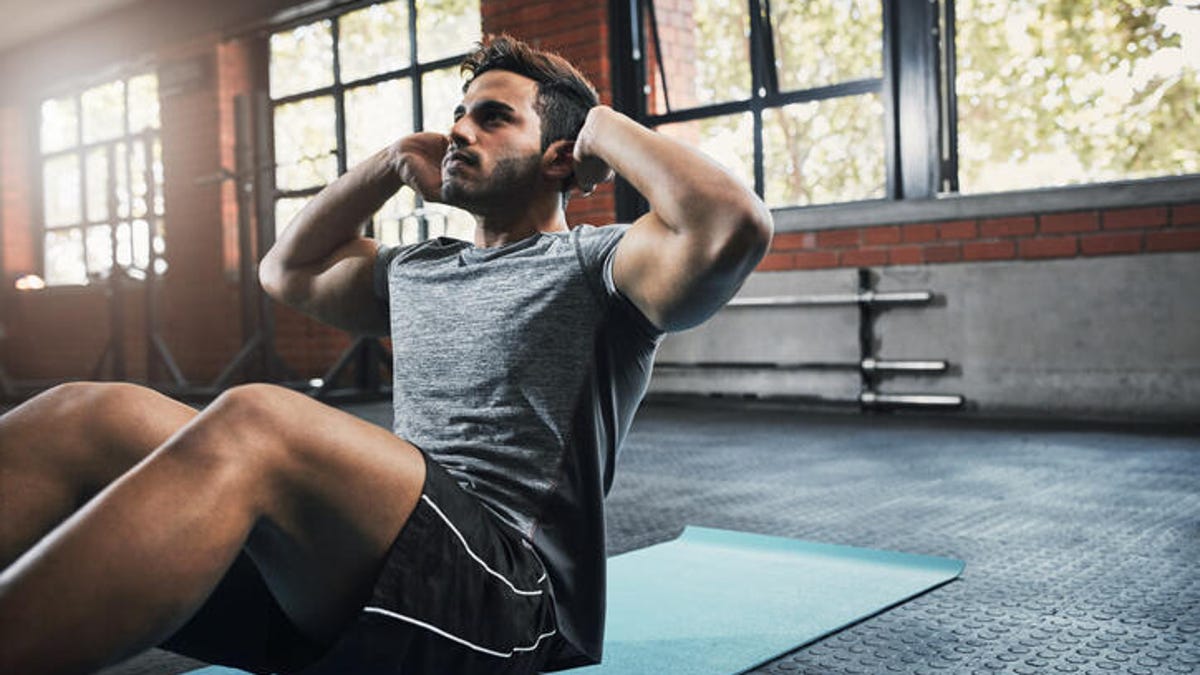Bodyweight workouts: How to exercise at home without any equipment
You don't need a gym or even exercise equipment to get fit. Use your bodyweight instead.

Your bodyweight is a form of resistance that can help you get strong.
Did you wish for some fancy gym equipment for Christmas but didn't quite get what you wanted? If you didn't get a fancy treadmill, smart fitness mirror, smart boxing setup, digital weight machine, coveted exercise bike or one of the other buzzy fitness products out there, but still want to get in shape at home, good news. As helpful all of these products can be, you don't need them to get in shape. There's one tool that you already have that's seriously underrated: your own body.
Even though nice fitness gear, smart gyms, and equipment are great -- you really don't need any fancy dumbbells, or anything else for that matter, to get a great workout. In fact, using your own body weight is one of the best ways to get in shape.
I mean, think about it -- your body is pretty heavy. Being able to do a push-up, or pull up is pretty impressive in itself. And you don't have to buy anything or rely on any equipment to help you get strong, which is perfect when you don't have time to hit the gym, or you're far away from your home set up.
Read more: Peloton, Daily Burn and more: Best workout subscription apps | The 7 best fitness subscription boxes in 2019 for every workout style | Apple Watch, Fitbit, Theragun: The best fitness gifts to get healthy and stay that way
There's no question that lifting weights at the gym is one way to get in shape, but it's definitely not the only way. Keep reading to learn more about the benefits of using your own bodyweight to get in shape, and how to make the most of your bodyweight-only workouts.
Moves like push-ups and planks are great bodyweight exercises.
The benefits of using just your body to workout
Using your own body to workout is obviously more convenient than a workout that requires more equipment, but what else can it offer? To start, you can end up working more muscles at the same time than if you were just isolating one body part with weights. "When we use our bodies instead of machines, we increase utilization of our core and also use stabilizing muscles which aid in injury prevention," says Holly Roser, a certified personal trainer and fitness nutrition specialist based in San Francisco.
And while you can't expect bodyweight-only exercises to prepare you to, say, lift a 100-pound object effortlessly, it can still help you get stronger and build muscle.
Since using your own body weight helps you activate more muscles, you're reducing your risk for injury. The more muscles you can activate at once, the more likely you are to be able to stabilize your body, which is important for everyday movement and exercise safety.
Read more: Should you eat before or after your workout? A dietician weighs in
When to use your bodyweight versus weights
While using your own bodyweight can definitely give you a full-body workout, it can't help you get everything you may want from a fitness routine. For example, you might need specific moves to help strengthen certain areas of your body that are hard to get to without equipment.
"There are moves that cannot be replicated using your body weight such as lat pull downs, chest flys or rows. These moves are very important as they're areas that are typically very weak due to sedentary lifestyles and hunching over computers and phones," Roser said.
Another point to consider when it comes to deciding between working out with weights or your own bodyweight is how fast you'd like to see results. "Using your own body weight will take longer to get the desired result. I would suggest adding body weight moves to a resistance training program," Roser said.
So this could look like alternating days that you use just your bodyweight to workout with other days that you add more resistance or strength training tools like weight machines or heavy dumbbells.
How to get the most out of your bodyweight workouts
You can string together moves like lunges, squats and planks for a full-body workout.
If you've ever done moves like side lunges, planks, pushups, and mountain climbers then you can string them together for a great full-body, no equipment necessary workout. These moves can be challenging for sure, but according to Roser, you may need to make some changes to the workout to make sure you're getting the most out of your time.
"You'd want to adjust your rep range to do higher reps and less sets. Aim for 2 sets of 25 reps of a move when using your own body weight," Roser said. Since you're using less resistance than if you were adding heavy weights to the moves, doing higher reps ensures that you're fatiguing your muscles enough to create change.
And if you want to amplify the cardio and calorie burning benefits of your bodyweight workouts, try adding in bursts of activity like mountain climbers or jogging in place in between exercises.
"This will ensure your heart rate is elevated and you're getting a larger calorie burn," Roser said.
The information contained in this article is for educational and informational purposes only and is not intended as health or medical advice. Always consult a physician or other qualified health provider regarding any questions you may have about a medical condition or health objectives.

